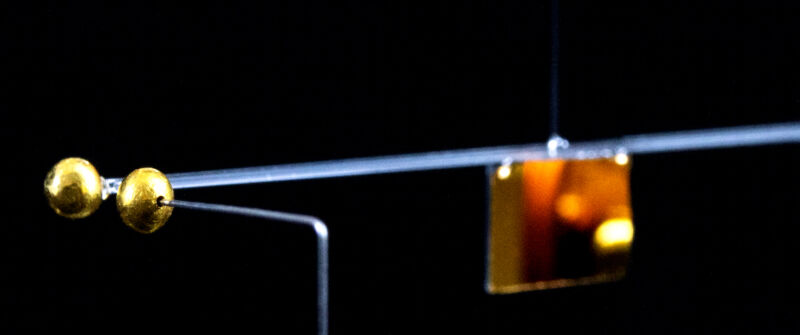Researchers measure the gravity exerted by a 90 milligram object

Enlarge / The experimental setup. (credit: Tobias Westphal / University of Vienna)
Gravity may feel like one of the most familiar forces, but it's actually among those we understand least. We know our current model of gravity is inconsistent with quantum mechanics. It also fails to account for the phenomena we've termed dark matter and dark energy. Unfortunately, studying gravity is extremely challenging because it's far and away the weakest of the forces. To get around this issue for the detection of gravitational waves, we've had to build two immense observatories, far enough apart so that the noise affecting one wouldn't be picked up at the other.
The gravitational waves we've detected come from utterly massive objects like neutron stars and black holes. Now, researchers in Vienna have announced progress toward detecting the gravitational force generated by tiny objects-in this case, spheres of gold only two millimeters across and weighing less than a tenth of a gram. Their work provides the first measurement of gravity at these scales, and the researchers are pretty sure they can go smaller.
It's so noisyThe work in question involves a fairly typical device for these sorts of experiments. It involves a solid bar with a gold ball attached to each end. The bar is suspended at its center point, which allows it to rotate freely around the horizontal plane. There's also a mirror placed at its center point, which is used to reflect a laser.
Read 11 remaining paragraphs | Comments